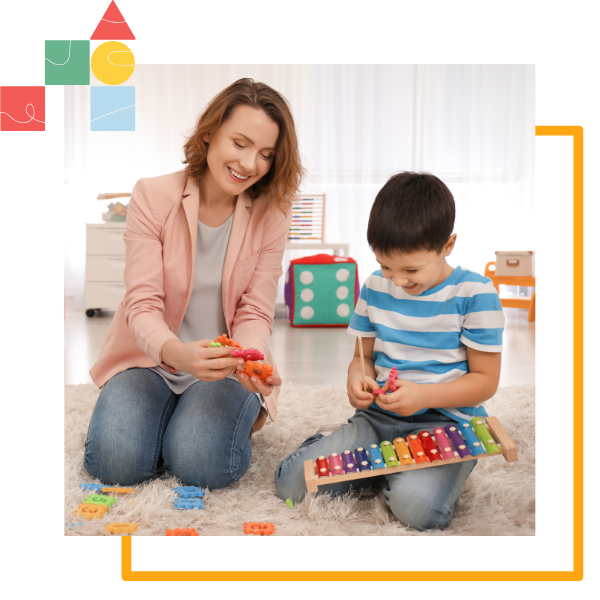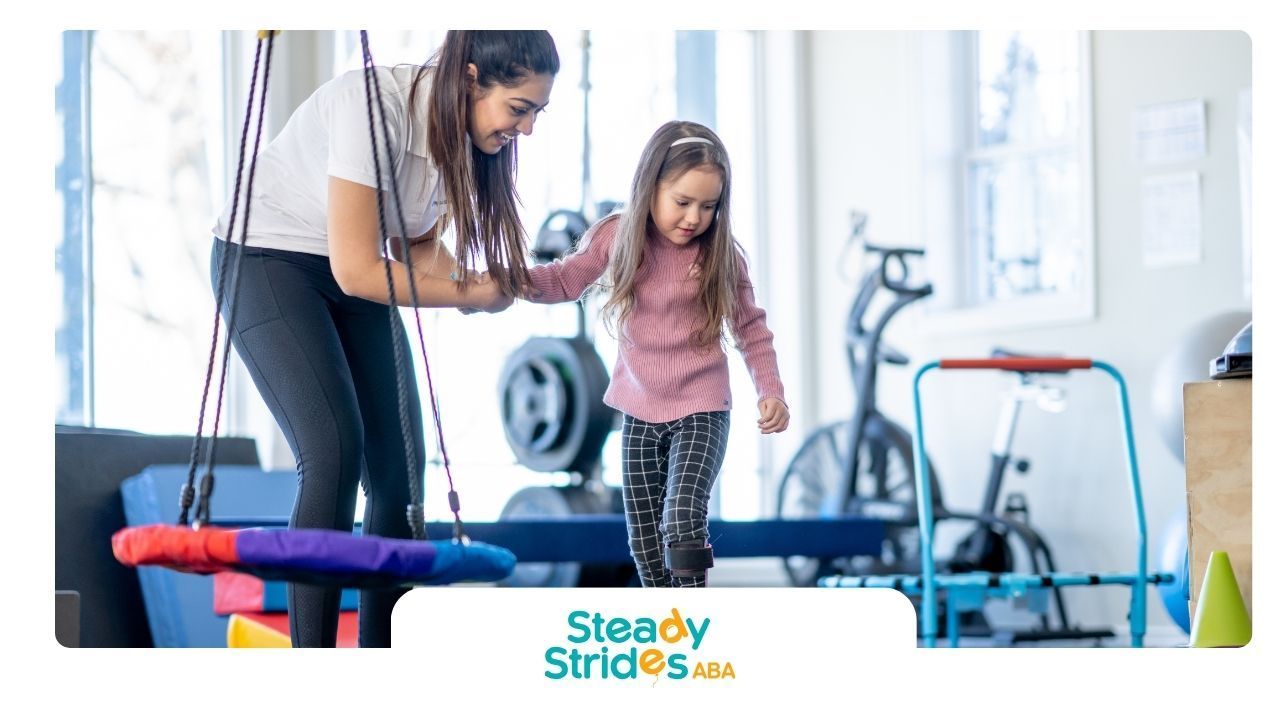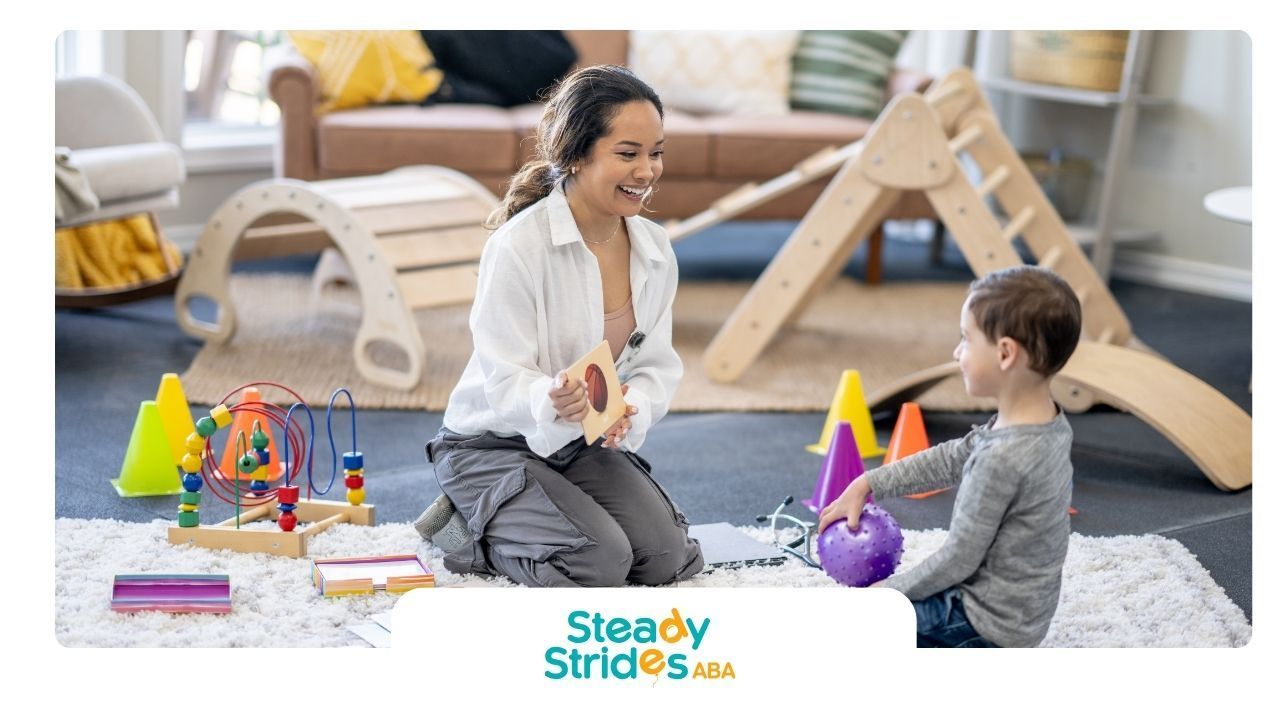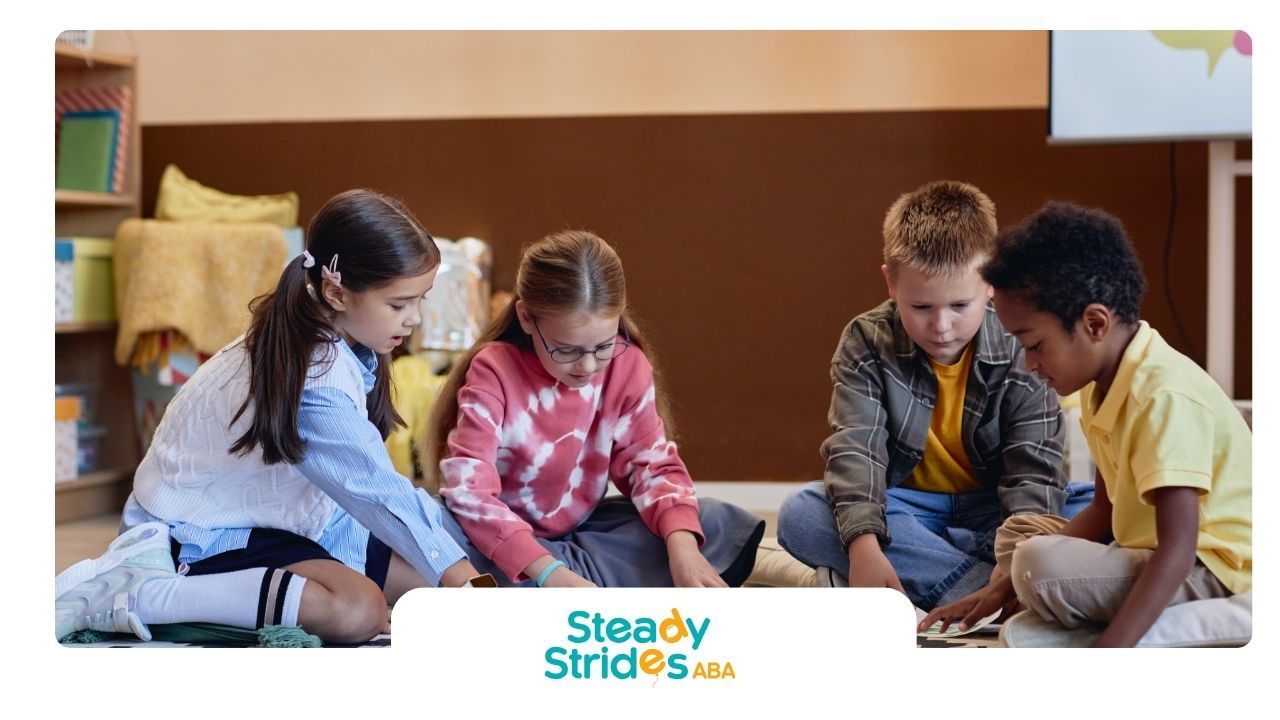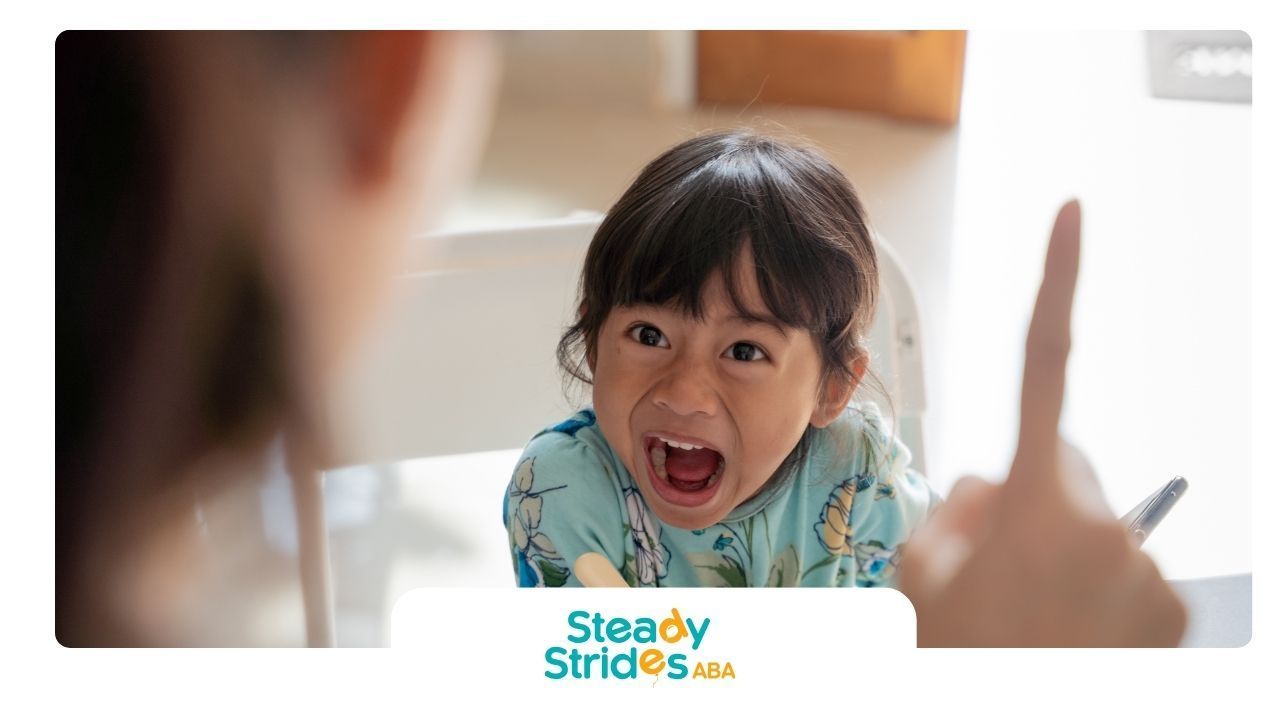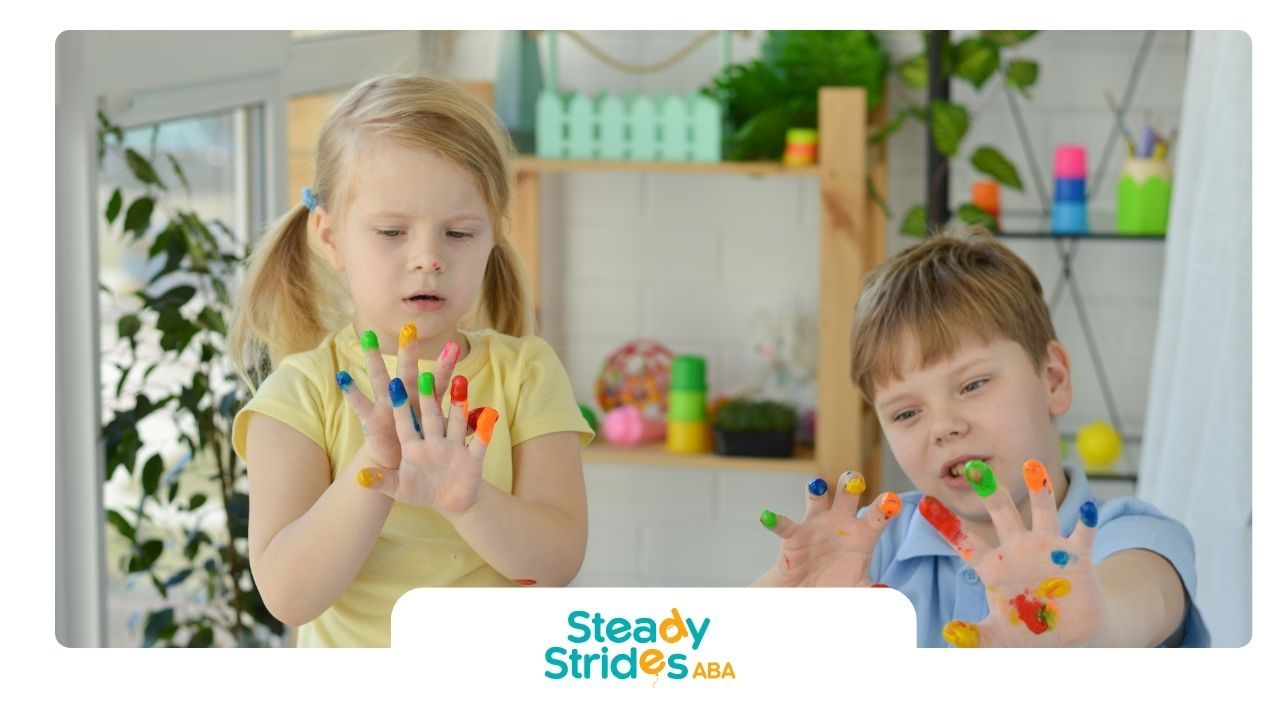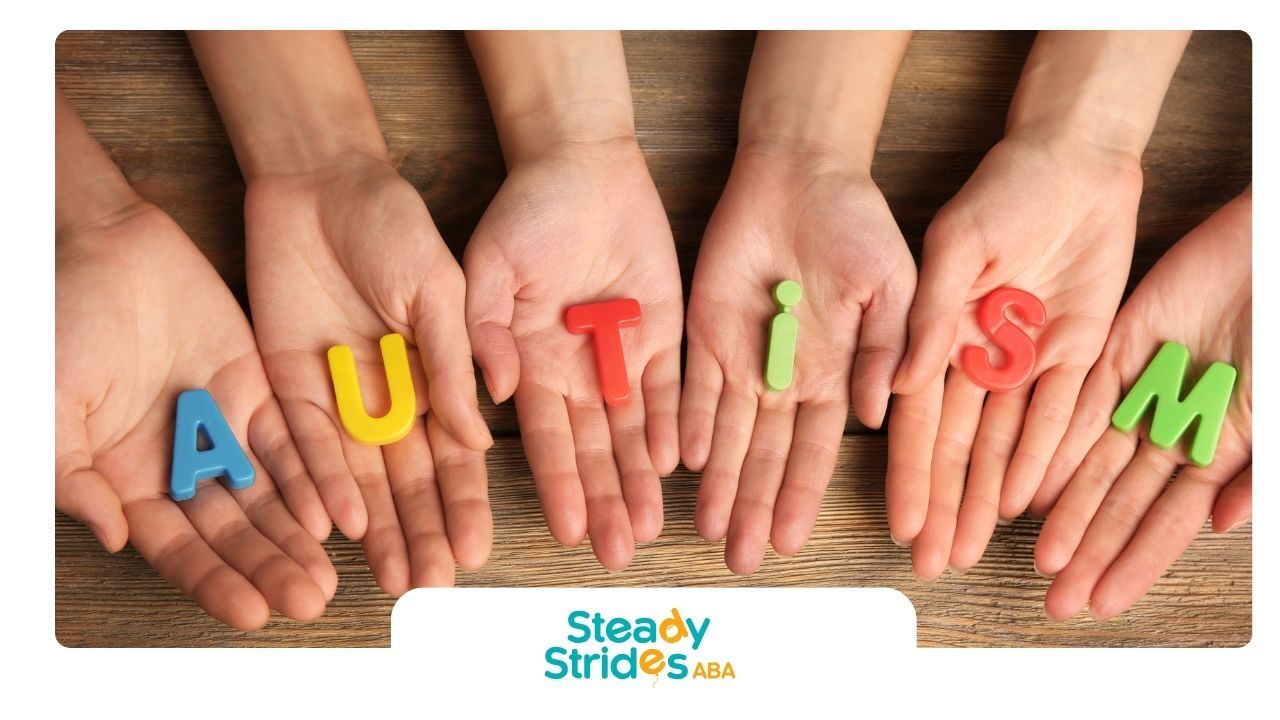Key Highlights
In the world of ABA, or behavior analysis, there's this key idea called prompt hierarchy that plays a big part in teaching and shaping how people act. By getting to grips with an effective prompt hierarchy, we can really make learning better and more successful for folks. So what's a prompt? It's basically help or a hint given to nudge someone towards the right answer. The way prompts are organized is from those that are pretty hands-on to ones that barely need any intervention at all. This setup helps learners get used to doing things on their own over time.
When it comes down to the kinds of hints you can give, there are several: verbal prompts where you use words; visual prompts which involve pictures or signs; physical ones where you might guide someone by touching them gently; and gestural prompts like pointing or nodding. Each type has its own role in helping pick up new skills.
Getting less hands-on as someone gets better at something—what’s known as prompt fading—is crucial for encouraging independence because it means gradually cutting back on how much help you're giving based on how well they're doing.
Introduction
Understanding the different types of prompts and how to slowly stop using them is really important in helping people learn new things on their own, especially when we're talking about behavior analysis and picking up new skills. For folks working in ABA, or Applied Behavior Analysis, it's all about making sure that each person gets a kind of help that's just right for them. Then, little by little, they try to use less of this help so the learner can do more by themselves. This guide dives into why knowing all about prompt hierarchy is key for encouraging the behaviors we want to see and helping individuals with developmental disabilities tackle challenges better.
Understanding the Basics of Prompt Hierarchy
In the world of behavior analysis, especially in ABA (Applied Behavior Analysis), there's this key idea called prompt hierarchy. It's all about using a step-by-step method to offer hints or cues that help people come up with the right answers on their own. Getting a handle on how prompt hierarchy works is really important for helping folks learn new skills and become more independent. This involves knowing about different types of prompts—like words we say, physical help we give, things we show, or gestures we make—to customize how we teach based on what each learner needs specifically. When you get good at understanding these basics of prompting and the various types it includes, you're setting yourself up to be great at coming up with effective ways to teach skills successfully.
Defining Prompts in Behavioral Interventions
In the world of behavior analysis, prompts are like little nudges or hints that help people figure out what they're supposed to do. These small cues make it easier for learners to understand and show the right kind of behavior that's expected from them. With each person having their own needs, behavior analysts work hard to create special prompts just for them. This way, they can get the reaction or action they're looking for more effectively. So really, when we talk about using prompts in behavioral interventions, it's all about helping individuals learn new skills and improve their behaviors step by step until they reach their ultimate goal.
The Significance of Prompting in Learning and Development
Prompting is super important when it comes to how people learn and grow, especially in helping change behaviors. It's all about giving the right hints or nudges so that learners can find the answer they're looking for more easily. There are different kinds of prompts like talking, showing pictures, or using gestures because everyone learns in their own special way. For folks who work with behavior analysis and ABA (which stands for Applied Behavior Analysis), really getting why these prompts matter makes a huge difference. They use this knowledge to make learning not just effective but also a lot more enjoyable, ensuring what's learned sticks around and gets used in other situations too.
Types of Prompts in Prompt Hierarchy
Physical prompts involve guiding someone by touching them gently. With verbal prompts, we use words to give instructions or directions. Visual prompts are all about using visual cues to show someone how to do something. Lastly, gestural prompts mean helping out with non-verbal signals like gestures.
Physical Prompts: Guiding with Touch
Physical prompts mean helping people by guiding them with touch. This way, they get physical guidance to know the right response. By showing them how to do things step-by-step, they can pick up and repeat these actions correctly. When used well in ABA therapy, this method is great for teaching new skills, especially to those with developmental disabilities. It's important for experts to use this kind of help carefully and gradually stop it so learners can start doing things on their own without any help.
Verbal Prompts: Instructional and Directive Cues
Verbal prompts are super important when it comes to helping people learn new things. They're like verbal hints that guide someone towards the right answer, making it easier for them to pick up a new skill. By figuring out just how much help each person needs, behavior analysts can give the perfect amount of support so learners can start doing things on their own while still getting the guidance they need to act correctly.
- With verbal cues, learning becomes smoother.
- For every learner's unique needs, adjusting the level of prompting is key.
- The goal is always about encouraging folks to respond on their own but with enough backup until they nail down what they're supposed to do.
Visual Prompts: Using Visual Cues for Guidance
Visual prompts are super important because they help people figure out what to do next by showing them pictures or signs. For folks who really get a lot from seeing things, this can make learning a whole lot better. By using stuff like images, symbols, or charts, visual cues make it easier for someone to understand directions and do tasks the right way. This approach is great because it helps people learn on their own while making sure they have the support they need through these visual aids, leading to a happier and more effective learning experience.
Gestural Prompts: Non-verbal Communication Aids
Using gestures as hints is all about helping people without using words. It's like when someone uses their hands, face, or other body parts to give a nudge in the right direction. This method is super helpful for folks who have special learning needs or developmental challenges because it makes picking up new things easier for them. When behavior analysts use these kinds of non-verbal cues, they're able to offer extra help that doesn't get in the way. This approach not only helps learners pick up new skills but also does so in a way that feels good and respectful, letting them figure things out on their own while still guiding them towards the right answer. Gestures are key in making sure learners respond correctly while feeling proud of what they've achieved.
Strategies for Prompt Fading
Prompt fading plays a key role in helping people learn new behaviors. By slowly taking away hints or cues and introducing delays, we can teach someone to act on their own without always needing help. This method is great because it helps with learning skills thoroughly and making sure they stick for the long run. With prompt fading done right, learners get to show what they've learned all by themselves, which leads them towards being more independent and self-reliant in different situations.
Gradual Reduction Techniques
Gradual reduction techniques are all about slowly taking away hints to help learners answer on their own. With this method, the amount of help given is reduced bit by bit, helping people learn skills deeply so they can do things by themselves over time. By cutting back on these hints gradually, folks start depending less on others and get better at keeping those skills up and using them in different situations. This approach is really important for teaching people how to be more independent and tackle a big problem in behavior analysis: relying too much on prompts. ABA professionals use these gradual reduction methods aiming for the ultimate goal where individuals can handle tasks all by themselves without needing someone else to guide them every step of the way.
Prompt Delay: Encouraging Independent Responses
Waiting a bit before expecting an answer is a key way to help people come up with answers on their own. When there's some time between the question and the needed reply, folks are nudged to think and do things by themselves. This approach lessens the reliance on being given cues all the time and helps skills stick better in someone's mind. By using this wait-time tactic, individuals get a chance to show what they can do without someone jumping in right away to help them out. It makes for more independence and keeps those abilities sharp longer. Overall, this method really boosts how we learn by making us rely more on ourselves, pushing everyone towards getting to where they need or want to be without too much hand-holding.
Application of Prompt Hierarchy in ABA Therapy
In ABA therapy, which stands for Applied Behavior Analysis, there's a really important technique called prompt hierarchy. It's all about using different kinds of help or hints that are just right for each person. The folks who work in ABA, known as professionals, use these prompts to help people learn on their own and pick up new skills more easily. Their big aim is to get everyone to a point where they don't need much help anymore. They do this by slowly taking away the prompts or waiting longer before helping out so that learners can answer correctly by themselves with hardly any support needed. This smart way of doing things is totally in line with what ABA therapy believes in–making sure skills stick around long-term, can be used in lots of situations and helping develop new abilities that meet each learner’s unique needs.
Enhancing Learner Autonomy
When ABA professionals use a prompt hierarchy, they're really aiming to help learners do things on their own by slowly taking away the prompts. This way, people start responding all by themselves, which is great for learning skills independently. These experts tailor their prompting methods based on what each learner needs specifically, helping them get to the right answer without leaning too much on those prompts. This kind of personalized touch makes learners feel proud of what they achieve and leads to enjoying learning more and keeping those skills sharp longer. With this approach in mind, everyone's unique journey towards skill acquisition becomes a bit easier and definitely more rewarding.
Customizing Prompts to Individual Needs
Understanding what each learner needs is super important when it comes to making prompts that really help. Everyone's different, with their own set of skills and ways they like to learn. So, it makes sense to figure out exactly what someone is good at and where they might need a bit more help before deciding on the best way to support them. By getting a clear picture of these unique needs, behavior analysts can make sure the hints or nudges we give are just right for helping each person move forward.
Choosing the right kind of hint isn't one-size-fits-all; it depends on what works best for the individual based on how they learn and what feels comfortable for them. This careful picking and choosing mean learners get just the push they need without feeling overwhelmed or frustrated.
With this approach, tailored specifically around an individual's needs, behavior analysts can offer a learning experience that not only fits perfectly but also keeps learners motivated and moving towards mastering new skills in no time. It’s all about hitting those milestones in skill acquisition by guiding everyone toward giving the correct response during their learning process in a way that feels natural and effective for them.
The Role of Prompt Hierarchy in Skill Acquisition
The prompt hierarchy is super important when it comes to learning new things. It's like having a guide that helps you step by step until you can do something on your own. The main point of using this method is that, over time, the help given starts to become less and less until learners can do what they need to all by themselves.
By offering the right kind of support at the right times, the prompt hierarchy makes sure learners can tackle tasks bit by bit. This way, picking up complex skills becomes more straightforward because everything gets broken down into smaller pieces which are easier to handle.
On top of helping with skill acquisition in one area, this approach also teaches how these skills can be used in different places or situations and with various people. As prompts start disappearing gradually, learners find themselves able to carry out their desired behavior no matter where they are or who they're with.
In short, within ABA (Applied Behavior Analysis), the prompt hierarchy isn't just useful; it's essential for empowering individuals as they work towards mastering new abilities and becoming more independent across different settings.
Building New Skills Step-by-Step
In ABA, learning new things bit by bit is really important. It's like taking a big task and breaking it into smaller pieces so it's not so overwhelming. This way, people can learn and get better at something step by step.
At first, you start with some help or hints to guide you along the way. But as you get the hang of things, these hints are used less and less until you don't need them anymore. This helps build up your confidence because you're seeing yourself succeed little by little.
By tackling one small part at a time, learners don't have to stress about getting everything right all at once. They can take their time mastering each piece before moving on to the next challenge. Feeling good about making progress plays a big role in this learning process, giving everyone involved that awesome sense of accomplishment.
This method isn’t just great for learning; it also makes sure what’s learned sticks around for good use later on in different situations too! Gradually easing off those initial hints means learners figure out how to do tasks all on their own which is super important.
So basically, going through skills step-by-step using prompts from ABA isn’t just effective but gives folks a solid base for doing stuff independently down the road while making sure they enjoy every win along their learning experience thanks to plenty of encouragement and positive feedback (reinforcement).
Ensuring Skill Retention and Generalization
Making sure people can remember and use new things they've learned in different places and with various folks is super important when teaching skills, especially in ABA. This way of teaching not only helps with picking up new stuff but also makes it stick and useful no matter where or who's around.
To keep these skills sharp, it's key to slowly stop helping as much once someone gets the hang of something. This lets them try on their own more, which really helps make sure they don't forget what they've learned.
When we talk about making these skills work everywhere–like at home, school, or a friend’s house–that's called generalization. By mixing up how we help out and cutting back over time, folks are better at taking what they’ve learned into the real world. It means they get to be more independent by using what they learn in everyday life.
On top of easing off the help bit by bit, cheering on and being happy about doing things right plays a big role too. It boosts sticking with good habits because getting praised feels great!
So by focusing on keeping those newly learned abilities fresh and usable anywhere through this step-by-step support method in ABA therapy ensures long-lasting benefits for learners.
Challenges and Solutions in Using Prompt Hierarchy
In ABA, using a system of prompts can be tricky. Sometimes, learners get too used to the help and find it hard to do things on their own, which is known as
prompt dependency. To fix this issue, it's key to slowly remove these hints while still giving extra help when needed. Techniques like waiting a bit longer before helping (time delay) or reducing how much you help little by little (prompt fading) are good ways to lessen the amount of assistance given.
With each learner needing different amounts of help for various skills, figuring out just the right amount requires watching closely and making decisions based on data. Keeping track of everything regularly helps behavior analysts see if their methods are working well or if they need tweaking.
By paying attention to these hurdles and finding smart ways around them, behavior analysts can make sure that using prompts really does lead towards more independence in learning new skills.
Overcoming Dependency on Prompts
In ABA therapy, a big issue is when learners get too used to hints and have a hard time doing what they're supposed to do on their own. To fix this problem of prompt dependency, behavior analysts have some tricks up their sleeve. They start by slowly removing the hints, beginning with the ones that are pretty obvious and then easing off on the help they give. This method helps learners build up their abilities and confidence so they can do the desired behavior without needing any nudges. On top of that, giving extra help like visual aids or verbal cues can make it easier for them to move from depending on prompts to acting independently. It's really important to cheer on these solo efforts and use positive reinforcement as a way to encourage them to keep trying without any prompts. By mixing together gradually taking away prompts, offering additional support, and cheering them on with positive reinforcement, we can beat prompt dependency which leads kids towards being more independent and picking up new skills better.
Addressing Inconsistencies in Prompt Use
Inconsistencies in prompt use can pose challenges in ABA therapy. It is crucial to ensure that prompts are delivered consistently and appropriately to promote effective learning. The traditional prompt hierarchy provides a guideline for the progression of prompts from more intrusive to less intrusive. However, it is important to consider individual learner characteristics and the specific skill being taught when determining the appropriate level of prompting. Behavior analysts must assess the learner's abilities and needs, consider contextual factors, and make data-driven decisions about prompt selection. To address inconsistencies in prompt use, a collaborative approach with the ABA team is essential. Regular communication and ongoing evaluation can help identify and address any inconsistencies in prompt delivery. The following table provides an overview of the traditional prompt hierarchy and considerations for determining the appropriate level of prompting:
| Type of Prompt | Description |
|---|---|
| Physical Prompts | Physically guiding the learner to complete a task |
| Model Prompts | Demonstrating the desired behavior for the learner to imitate |
| Gesture Prompts | Using non-verbal cues to guide the learner towards the correct response |
| Verbal Prompts | Using spoken language to provide guidance |
| Visual (Text/Picture) | Using visual aids, such as images or written words, to provide guidance |
By considering individual learner characteristics, contextual factors, and the specific skill being taught, behavior analysts can ensure that prompt use is consistent and at the appropriate level to facilitate skill acquisition.
Conclusion
To wrap things up, getting the hang of prompt hierarchy really matters when it comes to learning well and growing. By getting a good grip on the basics, spotting the different types of prompts, using fading techniques wisely, and putting this knowledge into practice in situations like ABA therapy, you can boost skill acquisition and help learners become more independent. Tackling issues like relying too much on prompts or fixing inconsistencies makes everything run smoother. Getting into prompt hierarchy means you're setting up for solid skill-building that sticks around and spreads out. This detailed guide gives you what you need to deal with the complex bits of prompt hierarchy so that behavioral interventions and developing skills turn out as best as they can.
Frequently Asked Questions
What Is the Most Effective Type of Prompt?
When it comes to helping someone learn something new, what works best can really depend on the person and what they're trying to learn. There are all sorts of ways to help guide them, like using physical actions, showing examples, making gestures, talking through steps or giving visual cues. Behavior analysts take a close look at who they're teaching and the situation at hand before deciding which method will be most helpful. Their main aim is for the learner not just to get by with help but eventually do things on their own while still feeling supported and encouraged along the way.



